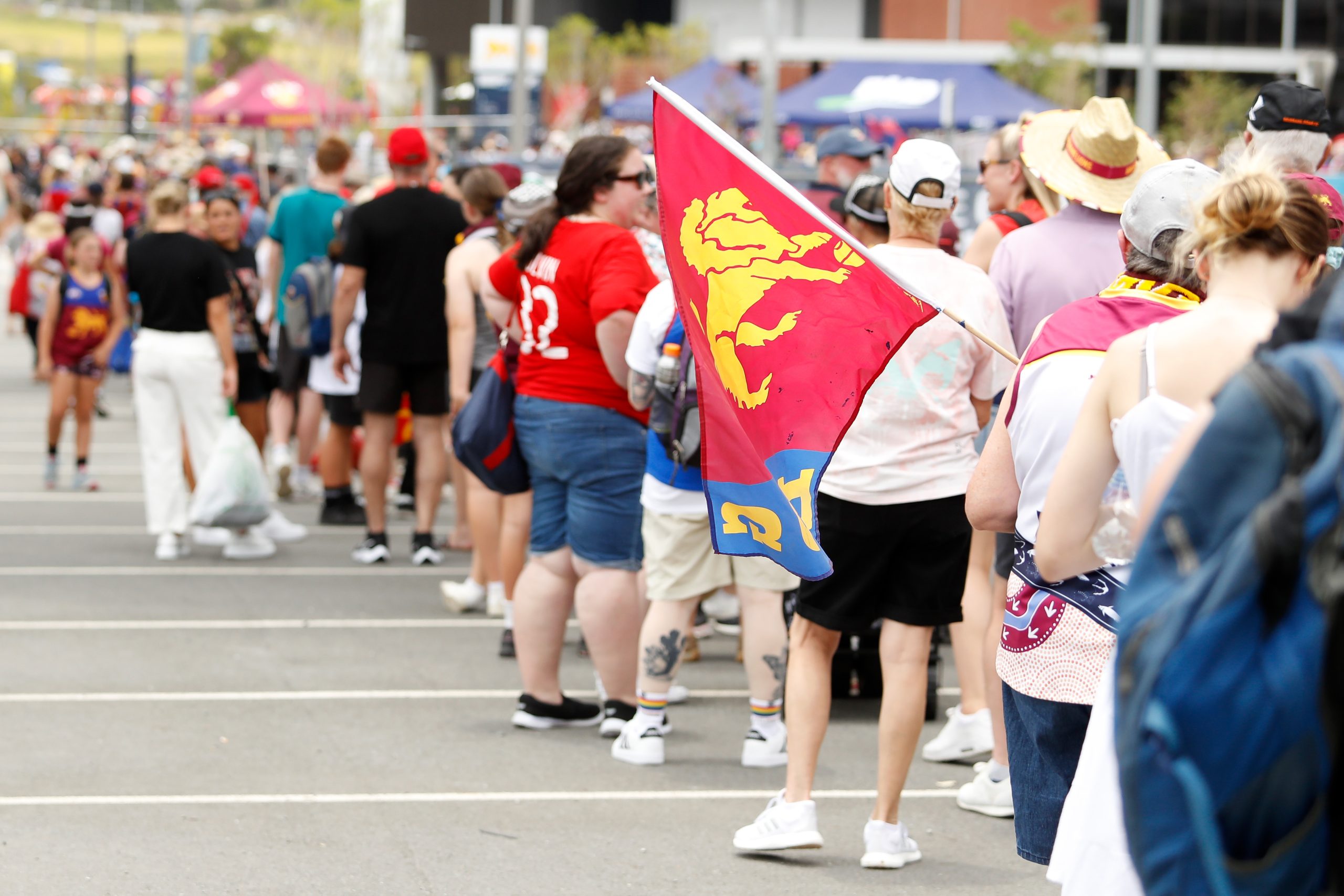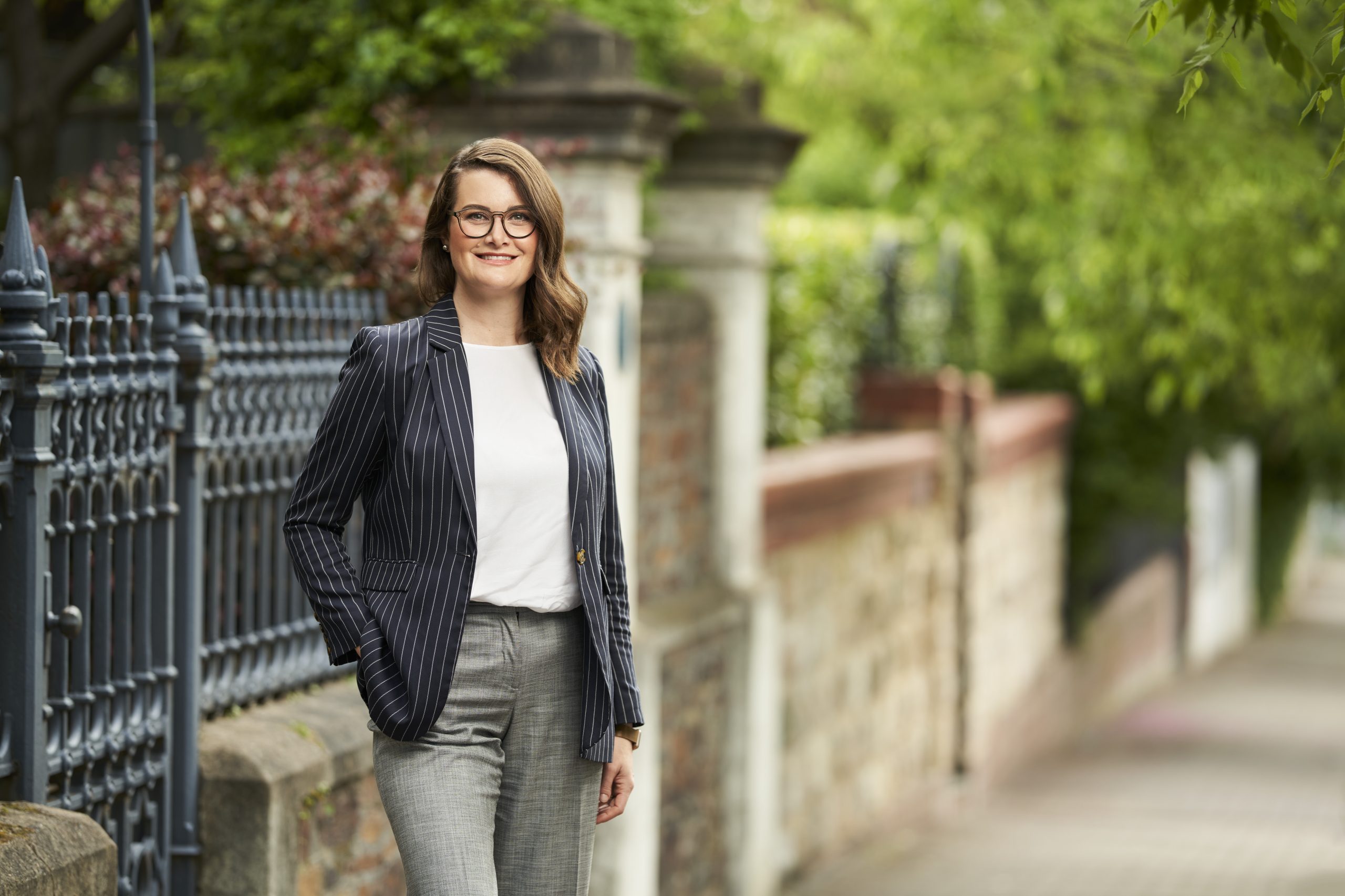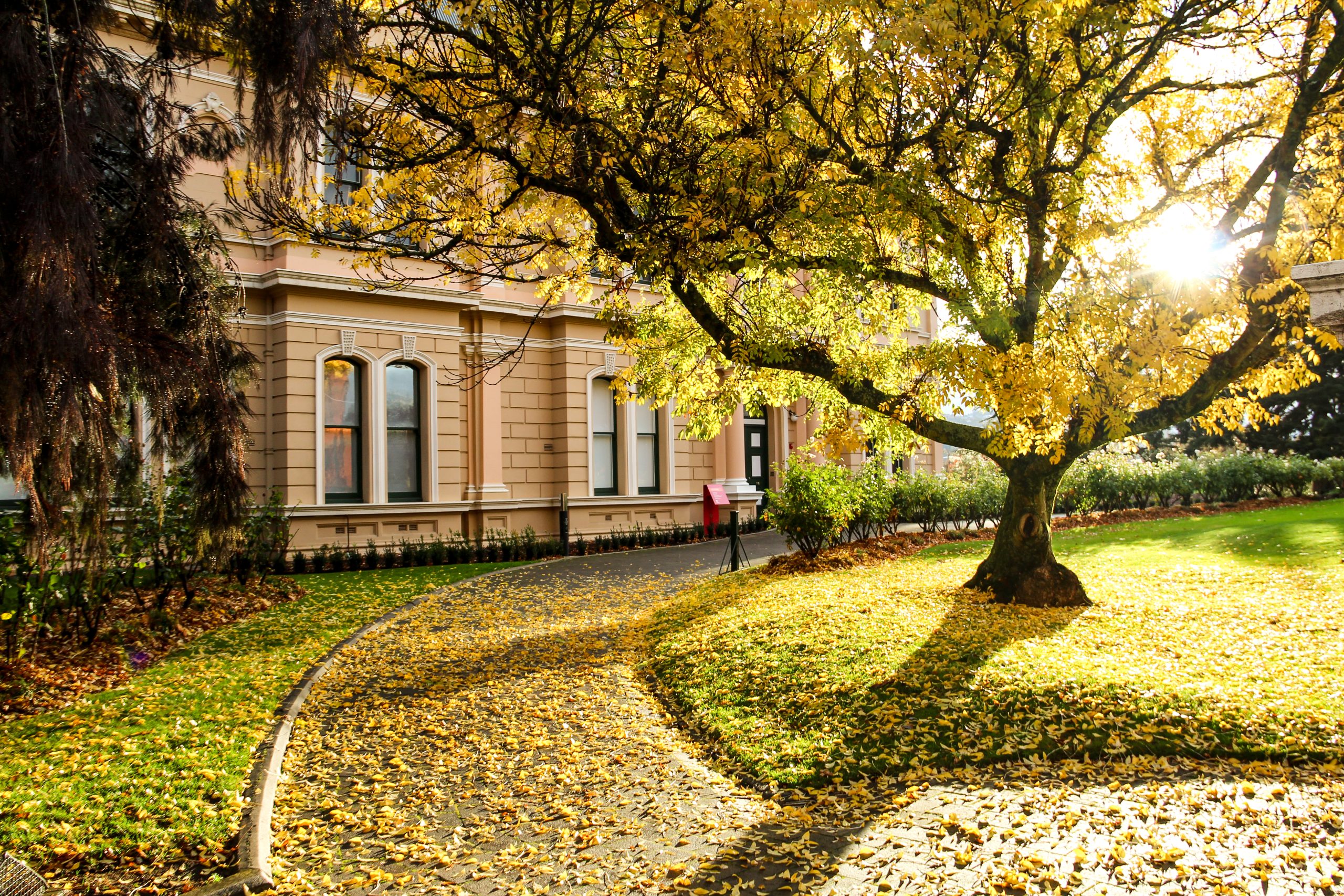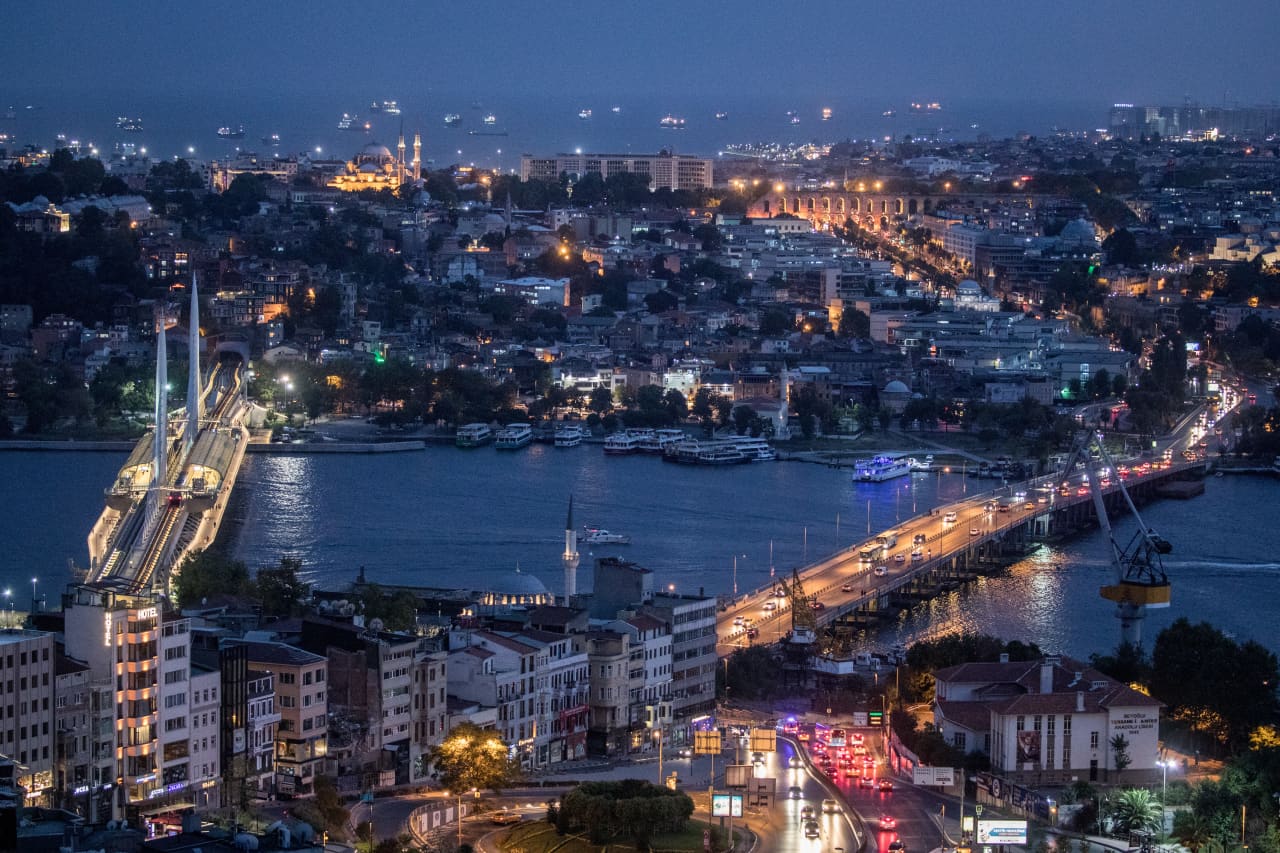Why autumn property listings are on the rise
Vendors are no longer waiting for spring to list their property, but there’s still an art to get the timing right
Industries like luxury fashion and elite sport are dictated by the seasons, so why not the residential real estate market? Selling homes is considered a science by some in the business who suggest that when you list can have a direct effect on the final price.
Analysis by property portal realestate.com.au’s data group PropTrack reveals there is generally a more profitable time of year to list a home for sale, but ultimately results can vary by region.
The 2021 research isolated the impact of the sale month from other features impacting price and discovered properties which sold in November received the highest average prices. Across Australia, sales in November were almost 6 percent higher than those in January, traditionally the sleepiest month on the real estate calendar. These results also ranked October and December as additionally profitable months.
Spring saturation
The reasoning behind strong spring selling statistics comes down to a mix of human behaviour and mother nature.
Tim Lawless, head of research at property data specialist CoreLogic, says while there is logic to the popularity of spring among sellers it could also just be an established pattern of behaviour Australians have found hard to kick.
“It definitely comes back to sentiment as well as the ability to present a property well. Spring is a time when the weather warms up, people become more active, the grass is greener and flowers start to bloom. So from a property presenting perspective, it’s a logical time to prepare your property for inspections so people can see it in its best possible light,” he says.
For more stories like this, order the latest issue of Kanebridge Quarterly magazine here.
It’s a great theory for houses with gardens, but he admits there is no real reason why apartment listings also ramp up in spring.
“I think it’s probably so deeply ingrained culturally that people don’t necessarily think about some of the logical aspects, because selling a unit wouldn’t be much different from season to season,” he says.
While this boom in the property calendar is often referred to as “spring selling season” Lawless says it could probably be more accurately be described as the “spring listing season”.
“We actually see the number of sales is equally as strong around March as it is in November, which are sort of both seasonal peaks in sales activity” he says. “But for listings, it’s really clear that after winter there’s normally a solid ramp up in the number of newly-listed properties coming onto the market.”
Understanding the real estate calendar
While spring is an active time of year in property, the rest of the calendar is marked by milestones which can make or break the success of a sale. School breaks, long weekends and even major sporting events should be taken into account when a home’s marketing campaign is being created.
“School holidays are relevant, but probably what’s more important would be long weekends, like Easter, or grand final weekends. The most obvious one is the Christmas period when pretty much everything shuts down,” Lawless says. “If you think about the property process, a lot of people need to be around to make a transaction happen.
“You need buyers and sellers obviously, but also you need the agent, the conveyancer, building inspectors and those individuals or professions may not be operating due to holidays.”

The real estate calendar had its first real shake up in a generation during the pandemic as potential buyers couldn’t leave on holiday or even view interstate homes.
Auctions moved online, property professionals worked from home and an unprecedented number of buyers bought site unseen.
As a result, some of those old seasonal selling tropes went out the window.
Bucking the seasonal trend for buyers
Bianca Denham, head of performance at the Ray White Group said bucking the seasonal listing trends could be a valuable move for sellers.
“Even pre pandemic we would train our agents not to fall into the trap of focussing on spring time,” Denham says.
“Because if sellers have been institutionalised — for lack of a better word — that spring is the best time to sell, then what it creates is actually more competition among listings.”
While there are more properties for sale, that doesn’t necessarily translate into more buyers, she says.
“Buyers don’t become buyers just because the daffodils are in bloom, they become buyers because something has happened in their life; they’ve got that promotion, finally saved the deposit, or they have a baby on the way,” she says. “Buyers become buyers for reasons that have absolutely nothing to do with the time of year.”

Alternatively, some agents are testing the water by working against old school traditions.
“We’re seeing more agents embracing the downtime of summer as an opportunity to sell,” Denham says. “If you look back to a pre pandemic so-called ‘normal’ market then you would have seen it go to sleep over Christmas and January.
“We’ve found that any agent who makes the concerted effort to list over Christmas is rewarded because there are inspections and they do get offers.”
She added that vendors who tap into holiday periods could be rewarded with more buyer eyeballs on their listing.
“When people step out of their everyday and go on a break, that’s when they can start dreaming because they’ve got time on their hands. It’s one of our nation’s most-loved pastimes — browsing on real estate portals. We love it even if we’re not actively buying.
“Not everyone goes away, and some people come from the country to the city, or vice versa, and they start looking at local real estate wherever they go.”
Lawless agrees that savvy sellers should consider just how saturated the market can get at certain periods.
“It’s definitely a factor in decision making. It’s good to know how much competition there’s going to be, or lack thereof,” he says. “So maybe going counter cyclical is a good idea by listing in winter when there’s not as many listings to come up against.”
In the end, do what works for you, he says.
“Your best option is to buy or sell when the timing is right for you rather than trying to time it with the seasons or trying to buy property at the bottom and sell at the top.”
This stylish family home combines a classic palette and finishes with a flexible floorplan
Just 55 minutes from Sydney, make this your creative getaway located in the majestic Hawkesbury region.
Ahead of the Games, a breakdown of the city’s most desirable places to live
PARIS —Paris has long been a byword for luxurious living. The traditional components of the upscale home, from parquet floors to elaborate moldings, have their origins here. Yet settling down in just the right address in this low-rise, high-density city may be the greatest luxury of all.
Tradition reigns supreme in Paris real estate, where certain conditions seem set in stone—the western half of the city, on either side of the Seine, has long been more expensive than the east. But in the fashion world’s capital, parts of the housing market are also subject to shifting fads. In the trendy, hilly northeast, a roving cool factor can send prices in this year’s hip neighborhood rising, while last year’s might seem like a sudden bargain.
This week, with the opening of the Olympic Games and the eyes of the world turned toward Paris, The Wall Street Journal looks at the most expensive and desirable areas in the City of Light.
The Most Expensive Arrondissement: the 6th
Known for historic architecture, elegant apartment houses and bohemian street cred, the 6th Arrondissement is Paris’s answer to Manhattan’s West Village. Like its New York counterpart, the 6th’s starving-artist days are long behind it. But the charm that first wooed notable residents like Gertrude Stein and Jean-Paul Sartre is still largely intact, attracting high-minded tourists and deep-pocketed homeowners who can afford its once-edgy, now serene atmosphere.
Le Breton George V Notaires, a Paris notary with an international clientele, says the 6th consistently holds the title of most expensive arrondissement among Paris’s 20 administrative districts, and 2023 was no exception. Last year, average home prices reached $1,428 a square foot—almost 30% higher than the Paris average of $1,100 a square foot.
According to Meilleurs Agents, the Paris real estate appraisal company, the 6th is also home to three of the city’s five most expensive streets. Rue de Furstemberg, a secluded loop between Boulevard Saint-Germain and the Seine, comes in on top, with average prices of $2,454 a square foot as of March 2024.
For more than two decades, Kyle Branum, a 51-year-old attorney, and Kimberly Branum, a 60-year-old retired CEO, have been regular visitors to Paris, opting for apartment rentals and ultimately an ownership interest in an apartment in the city’s 7th Arrondissement, a sedate Left Bank district known for its discreet atmosphere and plutocratic residents.
“The 7th was the only place we stayed,” says Kimberly, “but we spent most of our time in the 6th.”
In 2022, inspired by the strength of the dollar, the Branums decided to fulfil a longstanding dream of buying in Paris. Working with Paris Property Group, they opted for a 1,465-square-foot, three-bedroom in a building dating to the 17th century on a side street in the 6th Arrondissement. They paid $2.7 million for the unit and then spent just over $1 million on the renovation, working with Franco-American visual artist Monte Laster, who also does interiors.
The couple, who live in Santa Barbara, Calif., plan to spend about three months a year in Paris, hosting children and grandchildren, and cooking after forays to local food markets. Their new kitchen, which includes a French stove from luxury appliance brand Lacanche, is Kimberly’s favourite room, she says.
Another American, investor Ashley Maddox, 49, is also considering relocating.
In 2012, the longtime Paris resident bought a dingy, overstuffed 1,765-square-foot apartment in the 6th and started from scratch. She paid $2.5 million and undertook a gut renovation and building improvements for about $800,000. A centrepiece of the home now is the one-time salon, which was turned into an open-plan kitchen and dining area where Maddox and her three children tend to hang out, American-style. Just outside her door are some of the city’s best-known bakeries and cheesemongers, and she is a short walk from the Jardin du Luxembourg, the Left Bank’s premier green space.
“A lot of the majesty of the city is accessible from here,” she says. “It’s so central, it’s bananas.” Now that two of her children are going away to school, she has listed the four-bedroom apartment with Varenne for $5 million.
The Most Expensive Neighbourhoods: Notre-Dame and Invalides
Garrow Kedigian is moving up in the world of Parisian real estate by heading south of the Seine.
During the pandemic, the Canada-born, New York-based interior designer reassessed his life, he says, and decided “I’m not going to wait any longer to have a pied-à-terre in Paris.”
He originally selected a 1,130-square-foot one-bedroom in the trendy 9th Arrondissement, an up-and-coming Right Bank district just below Montmartre. But he soon realised it was too small for his extended stays, not to mention hosting guests from out of town.
After paying about $1.6 million in 2022 and then investing about $55,000 in new decor, he put the unit up for sale in early 2024 and went house-shopping a second time. He ended up in the Invalides quarter of the 7th Arrondissement in the shadow of one Paris’s signature monuments, the golden-domed Hôtel des Invalides, which dates to the 17th century and is fronted by a grand esplanade.
His new neighbourhood vies for Paris’s most expensive with the Notre-Dame quarter in the 4th Arrondissement, centred on a few islands in the Seine behind its namesake cathedral. According to Le Breton, home prices in the Notre-Dame neighbourhood were $1,818 a square foot in 2023, followed by $1,568 a square foot in Invalides.
After breaking even on his Right Bank one-bedroom, Kedigian paid $2.4 million for his new 1,450-square-foot two-bedroom in a late 19th-century building. It has southern exposures, rounded living-room windows and “gorgeous floors,” he says. Kedigian, who bought the new flat through Junot Fine Properties/Knight Frank, plans to spend up to $435,000 on a renovation that will involve restoring the original 12-foot ceiling height in many of the rooms, as well as rescuing the ceilings’ elaborate stucco detailing. He expects to finish in 2025.
Over in the Notre-Dame neighbourhood, Belles demeures de France/Christie’s recently sold a 2,370-square-foot, four-bedroom home for close to the asking price of about $8.6 million, or about $3,630 a square foot. Listing agent Marie-Hélène Lundgreen says this places the unit near the very top of Paris luxury real estate, where prime homes typically sell between $2,530 and $4,040 a square foot.
The Most Expensive Suburb: Neuilly-sur-Seine
The Boulevard Périphérique, the 22-mile ring road that surrounds Paris and its 20 arrondissements, was once a line in the sand for Parisians, who regarded the French capital’s numerous suburbs as something to drive through on their way to and from vacation. The past few decades have seen waves of gentrification beyond the city’s borders, upgrading humble or industrial districts to the north and east into prime residential areas. And it has turned Neuilly-sur-Seine, just northwest of the city, into a luxury compound of first resort.
In 2023, Neuilly’s average home price of $1,092 a square foot made the leafy, stately community Paris’s most expensive suburb.
Longtime residents, Alain and Michèle Bigio, decided this year is the right time to list their 7,730-square-foot, four-bedroom townhouse on a gated Neuilly street.
The couple, now in their mid 70s, completed the home in 1990, two years after they purchased a small parcel of garden from the owners next door for an undisclosed amount. Having relocated from a white-marble château outside Paris, the couple echoed their previous home by using white- and cream-coloured stone in the new four-story build. The Bigios, who will relocate just back over the border in the 16th Arrondissement, have listed the property with Emile Garcin Propriétés for $14.7 million.
The couple raised two adult children here and undertook upgrades in their empty-nester years—most recently, an indoor pool in the basement and a new elevator.
The cool, pale interiors give way to dark and sardonic images in the former staff’s quarters in the basement where Alain works on his hobby—surreal and satirical paintings, whose risqué content means that his wife prefers they stay downstairs. “I’m not a painter,” he says. “But I paint.”
The Trendiest Arrondissement: the 9th
French interior designer Julie Hamon is theatre royalty. Her grandfather was playwright Jean Anouilh, a giant of 20th-century French literature, and her sister is actress Gwendoline Hamon. The 52-year-old, who divides her time between Paris and the U.K., still remembers when the city’s 9th Arrondissement, where she and her husband bought their 1,885-square-foot duplex in 2017, was a place to have fun rather than put down roots. Now, the 9th is the place to do both.
The 9th, a largely 19th-century district, is Paris at its most urban. But what it lacks in parks and other green spaces, it makes up with nightlife and a bustling street life. Among Paris’s gentrifying districts, which have been transformed since 2000 from near-slums to the brink of luxury, the 9th has emerged as the clear winner. According to Le Breton, average 2023 home prices here were $1,062 a square foot, while its nearest competitors for the cool crown, the 10th and the 11th, have yet to break $1,011 a square foot.
A co-principal in the Bobo Design Studio, Hamon—whose gut renovation includes a dramatic skylight, a home cinema and air conditioning—still seems surprised at how far her arrondissement has come. “The 9th used to be well known for all the theatres, nightclubs and strip clubs,” she says. “But it was never a place where you wanted to live—now it’s the place to be.”
With their youngest child about to go to college, she and her husband, 52-year-old entrepreneur Guillaume Clignet, decided to list their Paris home for $3.45 million and live in London full-time. Propriétés Parisiennes/Sotheby’s is handling the listing, which has just gone into contract after about six months on the market.
The 9th’s music venues were a draw for 44-year-old American musician and piano dealer, Ronen Segev, who divides his time between Miami and a 1,725-square-foot, two-bedroom in the lower reaches of the arrondissement. Aided by Paris Property Group, Segev purchased the apartment at auction during the pandemic, sight unseen, for $1.69 million. He spent $270,000 on a renovation, knocking down a wall to make a larger salon suitable for home concerts.
During the Olympics, Segev is renting out the space for about $22,850 a week to attendees of the Games. Otherwise, he prefers longer-term sublets to visiting musicians for $32,700 a month.
Most Exclusive Address: Avenue Junot
Hidden in the hilly expanses of the 18th Arrondissement lies a legendary street that, for those in the know, is the city’s most exclusive address. Avenue Junot, a bucolic tree-lined lane, is a fairy-tale version of the city, separate from the gritty bustle that surrounds it.
Homes here rarely come up for sale, and, when they do, they tend to be off-market, or sold before they can be listed. Martine Kuperfis—whose Paris-based Junot Group real-estate company is named for the street—says the most expensive units here are penthouses with views over the whole of the city.
In 2021, her agency sold a 3,230-square-foot triplex apartment, with a 1,400-square-foot terrace, for $8.5 million. At about $2,630 a square foot, that is three times the current average price in the whole of the 18th.
Among its current Junot listings is a 1930s 1,220-square-foot townhouse on the avenue’s cobblestone extension, with an asking price of $2.8 million.
This stylish family home combines a classic palette and finishes with a flexible floorplan
Just 55 minutes from Sydney, make this your creative getaway located in the majestic Hawkesbury region.


















